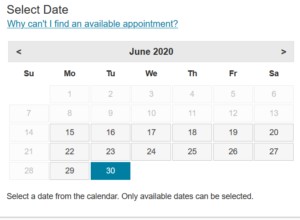Questo è un po' complicato e per trovare risultati che aumentano o diminuiscono costantemente, probabilmente vorrai utilizzare il MATCH_RECOGNIZE
clausola, che MySQL non supporta (ancora). In questo modo puoi definire un modello in base al quale ogni qty è inferiore al valore precedente. Inoltre, potresti probabilmente farlo con un cte ricorsivo, ma sarebbe al di fuori delle mie capacità.
Ecco cosa mi è venuto in mente, con l'avvertenza che confronta solo il primo e l'ultimo valore:
WITH
tbl (customer, purchasedate, quantity) AS (
SELECT * FROM VALUES
('Bob', '9/1/2021', 10),
('Bob', '9/10/2021', 6),
('Bob', '9/18/2021', 5),
('Bob', '9/19/2021', 8),
('Mary', '9/1/2021', 10),
('Mary', '9/10/2021', 6),
('Mary', '9/18/2021', 5),
('Mary', '9/19/2021', 3),
('Frank', '9/1/2021', 5),
('Lucus', '9/1/2021', 5),
('Lucus', '9/10/2021', 6),
('Lucus', '9/18/2021', 10)
)
SELECT
DISTINCT customer
FROM
tbl
QUALIFY
FIRST_VALUE(quantity) OVER (partition BY customer ORDER BY purchasedate)
> LAST_VALUE(quantity) OVER (PARTITION BY customer ORDER BY purchasedate)
Che dà:
CUSTOMER
Bob
Mary
Oppure, per ridurre rigorosamente con un massimo noto, puoi concatenarli tutti insieme, il che diventa piuttosto brutto:
WITH
tbl (customer, purchasedate, quantity) AS (
SELECT * FROM VALUES
('Bob', '9/1/2021', 10),
('Bob', '9/10/2021', 6),
('Bob', '9/18/2021', 5),
('Bob', '9/19/2021', 8),
('Mary', '9/1/2021', 10),
('Mary', '9/10/2021', 6),
('Mary', '9/18/2021', 5),
('Mary', '9/19/2021', 3),
('Frank', '9/1/2021', 5),
('Lucus', '9/1/2021', 5),
('Lucus', '9/10/2021', 6),
('Lucus', '9/18/2021', 10)
)
SELECT
DISTINCT customer
FROM
tbl
qualify
(NTH_VALUE(quantity, 1) OVER (partition BY customer ORDER BY purchasedate) >= NTH_VALUE(quantity, 2) OVER (partition BY customer ORDER BY purchasedate))
and ((NTH_VALUE(quantity, 2) OVER (partition BY customer ORDER BY purchasedate) >= NTH_VALUE(quantity, 3) OVER (partition BY customer ORDER BY purchasedate)) or (NTH_VALUE(quantity, 3) OVER (partition BY customer ORDER BY purchasedate) is null))
and ((NTH_VALUE(quantity,3) OVER (partition BY customer ORDER BY purchasedate) >= NTH_VALUE(quantity, 4) OVER (partition BY customer ORDER BY purchasedate)) or (NTH_VALUE(quantity, 4) OVER (partition BY customer ORDER BY purchasedate) is null))
Che dà:
CUSTOMER
Mary
Anche se per un importo sconosciuto penserei match_recognize sarebbe la soluzione migliore (o potresti aggiungere qualche ricorsione o una funzione personalizzata).




